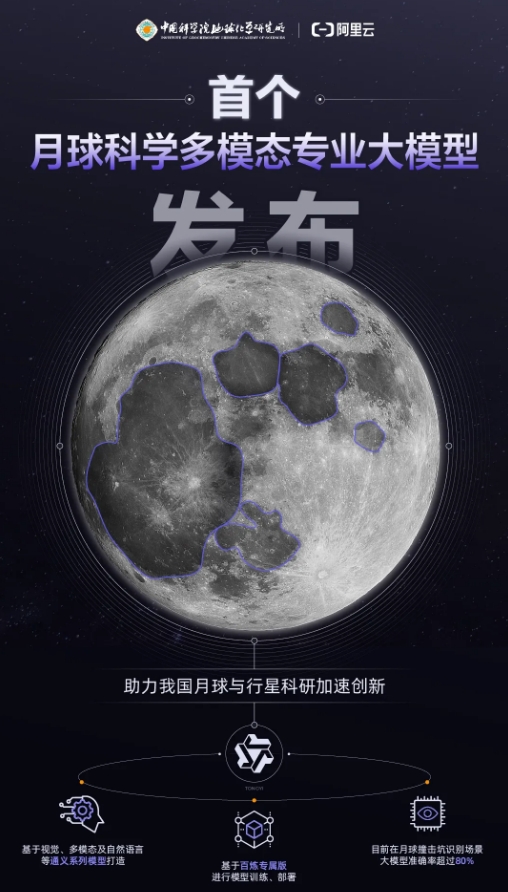At the 2024 Digital Expo, the Institute of Geochemistry, Chinese Academy of Sciences, in collaboration with Alibaba Cloud, unveiled the world's first "Lunar Science Multimodal Large Model." This innovative model, built on Alibaba Cloud's Tongyi series, aims to enhance the accuracy of determining the age and morphology of lunar craters, currently achieving over 80% accuracy.
The model integrates visual, multimodal, and natural language processing capabilities from the Tongyi series, employing RAG (Retrieval-Augmented Generation) technology for fine-tuning and training on Alibaba Cloud's BaiLian exclusive edition. Lunar crater identification is its prime application scenario, crucial for studying lunar geological evolution. The characteristics of craters, such as size, depth, and shape, are key to understanding lunar geological history.

Currently, there are over 1 million lunar craters with a diameter of more than one kilometer, and the number of smaller craters remains undetermined. Relying solely on manual identification is impractical. The application of the Lunar Large Model significantly boosts research efficiency; researchers only need to input crater images and related questions, and the model can determine the corresponding modality type from multimodal data and provide answers.
In the future, the Lunar Large Model will be integrated into the "Digital Lunar Cloud Platform," driving the platform's intelligent upgrade. Led by the Institute of Geochemistry, Chinese Academy of Sciences, this platform is the most comprehensive cloud platform for lunar exploration data internationally, integrating scientific research, engineering applications, and public education. It will join major scientific facilities like FAST, becoming a vital component of research infrastructure, and accelerating innovation in lunar and planetary science research in China.







